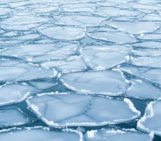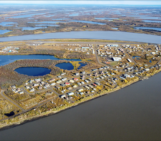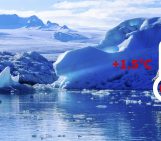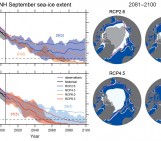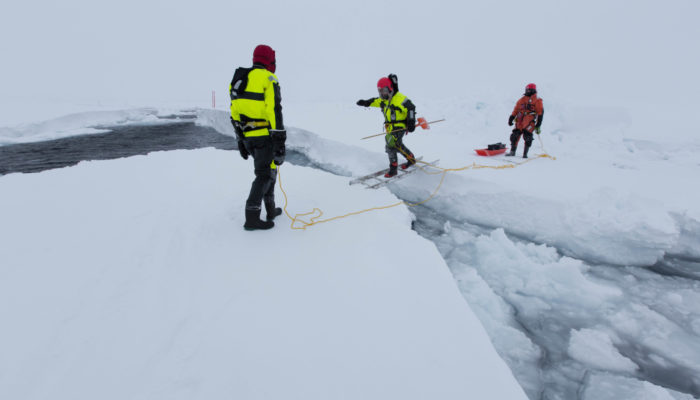
The increase in air and water temperature due to climate change drives the retreat in the Arctic sea-ice cover. During summer, when sunlight reaches the Arctic, the absorption of heat by the dark ocean water enhances the sea-ice melt through the ice-albedo feedback. During winter, when sunlight does not reach the Arctic, another feedback is at work, as storms enhance the energy transfer between air, ice and water…
How can storms enhance sea-ice melting?
In summer, when the Arctic sea-ice cover is close to its minimum extent, a large storm can rapidly lead to a further decrease in the ice cover. In the case of a storm, the ice breaks up and is pushed together due to the wind-induced waves that quickly develop in the vast areas of open water. Once the storm is over, the resulting small ice pieces drift apart and melt faster than the larger ice pieces would have melted before the storm.
During winter, there is hardly any open water in the Arctic Ocean. An exception is the Barents Sea, where warm ocean water flows in from the North Atlantic and sinks under the surface when it meets the sea ice. Because this inflowing water got warmer over the past couple of decades, the Barents Sea has become nearly ice free in the winter (Polyakov et al, 2017). The “Whaler’s Bay“, north of Svalbard, is experiencing a similar evolution. In this area of open water, where the banks of the bay are formed not by land, but by sea ice, warm ocean water brought by currents sinks under the ice as well. While the effect of the water warming leads to a clear retreat of the ice in both the Barents Sea and Whaler’s Bay, another phenomenon can lead to an even faster retreat: episodic winter storms (e.g. Boisvert et al, 2016) that bring in warm air and push the sea ice northwards.
Until now, scientists observed both processes mainly using ocean moorings and satellite remote sensing sources as winter in-situ observations in this area are very rare.
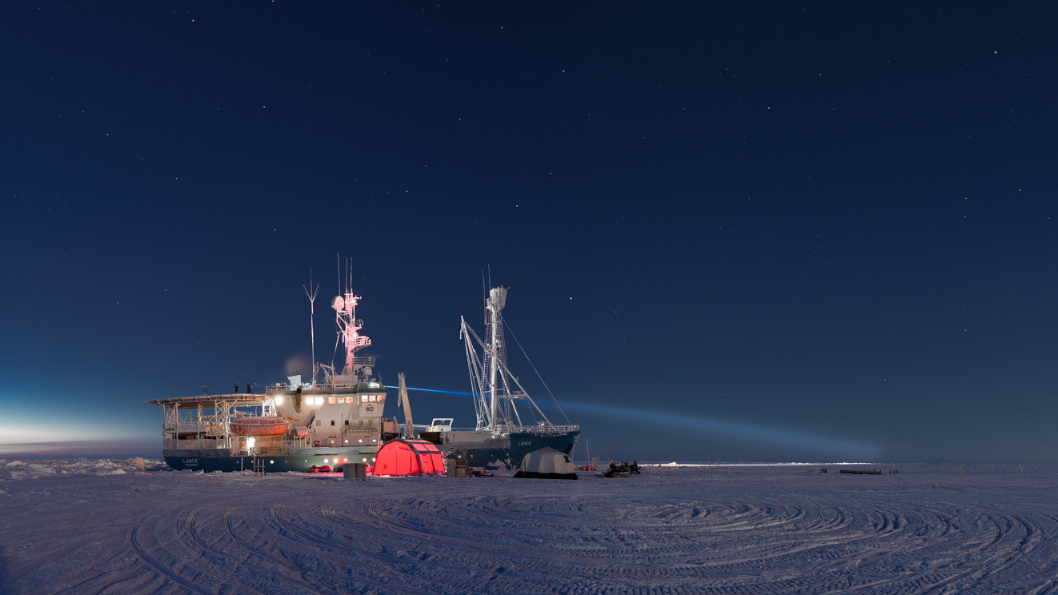
Fig. 2: N-ICE2015 was based in an ice camp set around RV Lance. The ship was assisted to approx. 84N by an ice breaker and then left to drift out towards the Whaler’s Bay slowly with the sea ice and ocean surface current. [Credit: Paul Dodd, Norwegian Polar Institute].
Observations from the N-ICE 2015 campaign
In early 2015, the Norwegian Polar Institute led a half-a-year-long international expedition in the sea ice north of the Whaler’s Bay (Norwegian Young Sea Ice Cruise, N-ICE2015). During the winter part of the expedition, when air temperatures were typically below -20ºC, six powerful storms brought strong winds and mild temperatures into the region. The atmosphere-ice-ocean measurements recorded by the expedition revealed complex processes of energy transfer resulting in complex combination of thin and snow-covered sea ice, numerous leads, and pressure ridges (see this previous post about sea-ice dynamics).
The observations from N-ICE2015 show that early winter storms deposited a thick snow cover on the ice. Because snow is an excellent insulator, heat from the ocean cannot escape into the atmosphere and the water right under the ice does not cool enough to form further sea ice. This way, the ice stays relatively thin. So thin, that it yields the weight of the deep snow cover and gets submerged under the sea level. Generally, ice floes can be kilometers-wide and have thick steep edges built of pressure ridges that prevent water seeping into the snow from the sides of the floes.
However, each new storm during the observation period came with strong southerly winds that pushed the ice floes northwards with such force that they cracked in much smaller pieces. After the center of the storm passed over the sea ice, the wind direction reverted to southward and the ice stretched again towards Whaler’s Bay. The cracked floes were then less protected from water seeping into the snow from the cracks. Some large cracks even developed into leads with open water. After the storms, northerly winds brought back cold temperatures and cracks, leads, and flooded snow froze rapidly.
At the same time, the motion of the ice floes led to vertical mixing at the ocean’s surface. If this mixing happened right above the sinking warm water, some of the warm water was brought up to the surface and melted the ice from below.
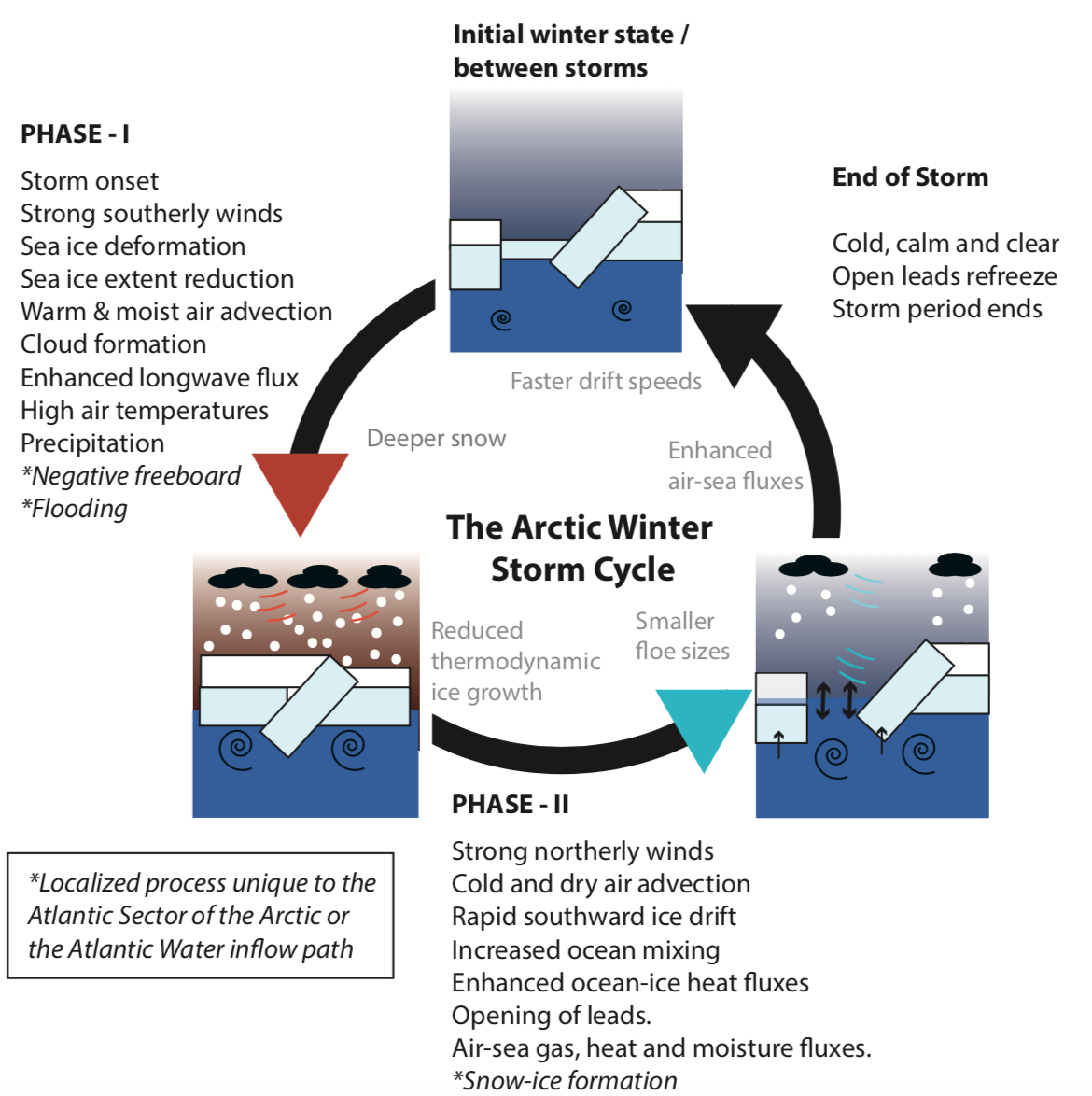
Figure 3: The Arctic Winter Storm Cycle [Adapted from Graham et al. (2019)].
The shallow warm ocean water currents are unique to the Barents Sea and Whaler’s Bay in the Arctic. Further in the Central Arctic, the cold ocean has much less potential to melt sea ice during winter. Still, many powerful storms can reach beyond the North Pole and cross the whole Arctic Ocean. This means that the abundant snowfall, breaking-up of the ice floes, flooding of snow and opening of the leads can be common in large parts of the Arctic Ocean in the winter (for details see Fig. 3 and Graham et al, 2019). This way, a row of passing storms cannot only build a deep snow cover, but also create a broken-up ‘ice-scape’ that is susceptible to melt faster during summer. Moreover, abundance of areas of thin ice which transforms into leads can let enough light into the ocean to trigger large algae bloom earlier than usual in the season (Assmy et al, 2017). In summary, winter storms can make a large cumulative impact that lasts far beyond the short duration of a single storm.
More observations are needed!
Although it provided a lot of new understanding on the importance of storms for the sea-ice evolution, the N-ICE2015 brought some limitations. For example, it ended in June, before we could observe summer melt processes and it was limited to the area north of the Whaler’s Bay. To confirm and further explore the Arctic atmosphere-ice-ocean-ecosystem processes, the international scientific community is launching an even larger expedition in 2019 and 2020.
The Multidisciplinary drifting Observatory for the Study of Arctic Climate (MOSAiC) will be a huge international effort with hundreds of scientists involved in field work, data analysis and research. Its main goal is to collect the data from the ‘new Arctic’ where the sea ice is much thinner than earlier decades. Such data can help improve the climate model projections that still under-represent the recent decline in sea ice extent and volume. MOSAiC will provide observations spanning over the full annual cycle of sea ice, from freeze-up in fall 2019 to melt in summer 2020. Geographically, the expedition will cover vast distances by drifting with the sea ice from the Central Arctic towards the North Atlantic. MOSAiC observations will build on the results from N-ICE2015 and will measure the effects of storms also in the Central Arctic.
Further reading
- Graham et al. (2019): Winter storms accelerate the demise of sea ice in the Atlantic sector of the Arctic Ocean, Scientific Reports, 9. doi: 10.1038/s41598-019-45574-5.
- Assmy et al. (2017): Leads in Arctic pack ice enable early phytoplankton blooms below snow-covered sea ice, Scientific Reports, 7. doi: 10.1038/srep40850.
- Atmosphere-ice-ocean-ecosystem processes in a thinner Arctic sea ice regime: the Norwegian young sea ICE cruise 2015 (N-ICE2015), JGR Special Issue (2018).
- MOSAiC expedition website
- Image of the Week – Sea-ice dynamics for beginners
Edited by Clara Burgard
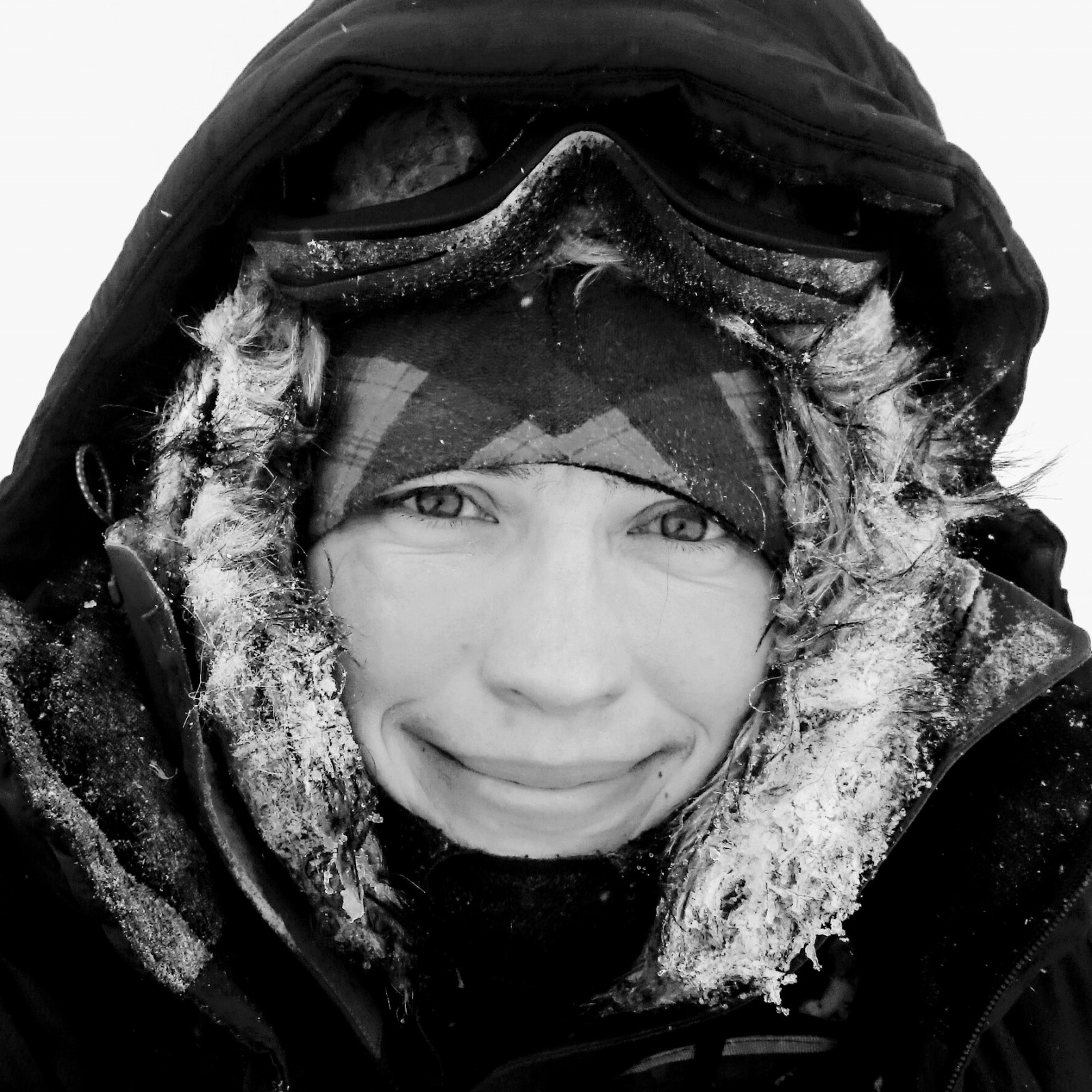 Polona Itkin is a researcher at the UiT The Arctic University of Norway, Tromsø. She investigates the sea ice dynamics of the Arctic Ocean and its connection to the sea ice thickness and snow depth. In her work she combines the information from in-situ observations, remote sensing and numerical modeling. Polona was a post-doctoral researcher at the Norwegian Polar Institute and one of many early career scientists involved with N-ICE2015. The expedition was highlighted also in their social media project ‘oceanseaiceNPI’: Instagram.com/OceanSeaIceNPI, Twitter.com/OceanSeaIceNPI, Facebook.com/OceanSeaIceNPI, contact Email: polona.itkin@uit.no.
Polona Itkin is a researcher at the UiT The Arctic University of Norway, Tromsø. She investigates the sea ice dynamics of the Arctic Ocean and its connection to the sea ice thickness and snow depth. In her work she combines the information from in-situ observations, remote sensing and numerical modeling. Polona was a post-doctoral researcher at the Norwegian Polar Institute and one of many early career scientists involved with N-ICE2015. The expedition was highlighted also in their social media project ‘oceanseaiceNPI’: Instagram.com/OceanSeaIceNPI, Twitter.com/OceanSeaIceNPI, Facebook.com/OceanSeaIceNPI, contact Email: polona.itkin@uit.no.

